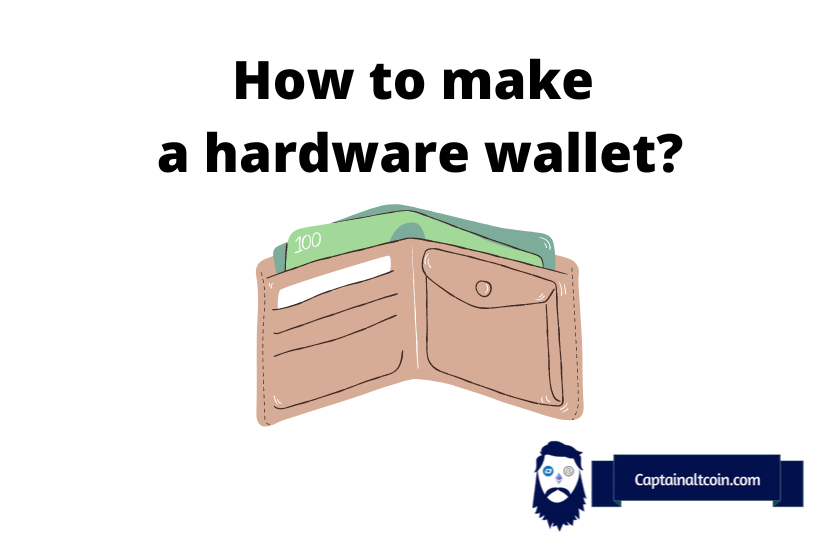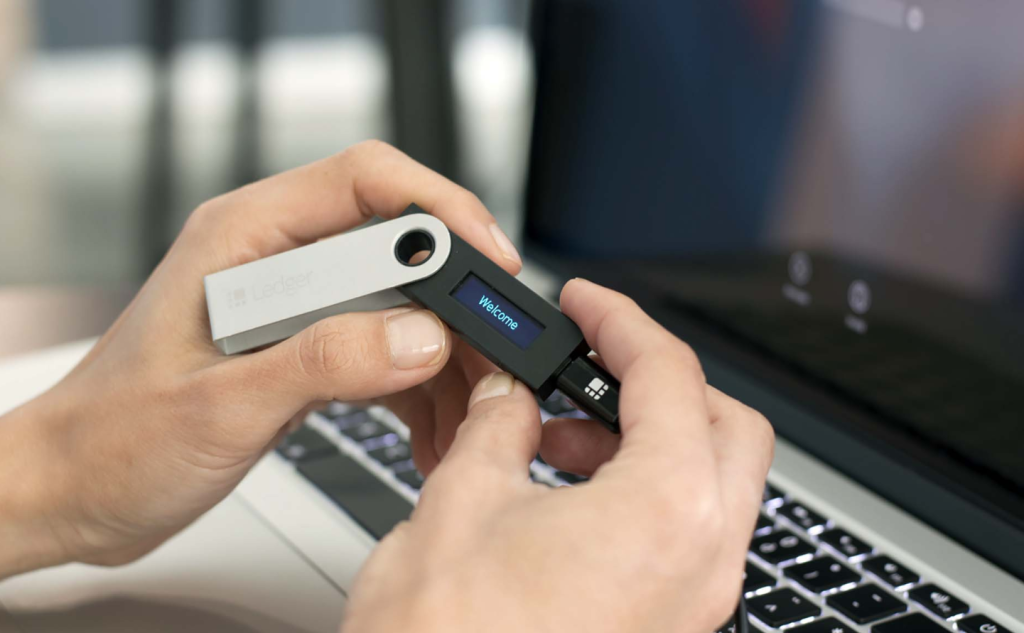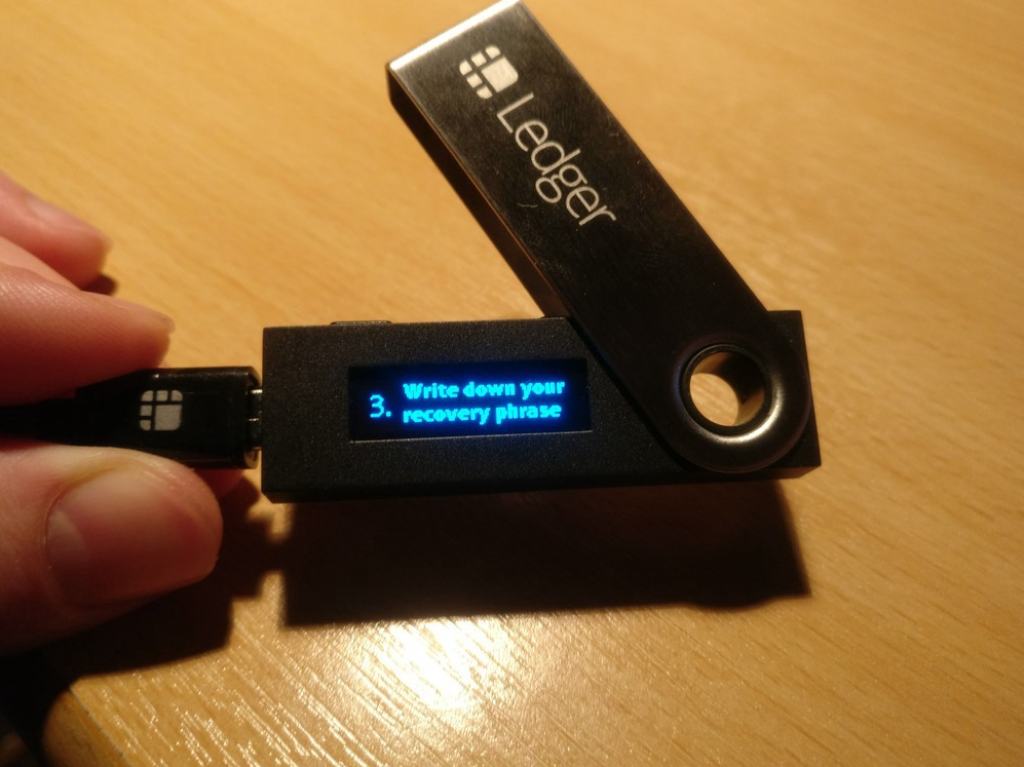
It is quite feasible to create your own hardware wallet. However, an identical replica of a Trezor or Ledger would be impossible to produce.
Let’s have a look at the gist of what you can expect from a commercial hardware wallet:
- it has a separate chip in the device, which creates and saves private keys,
- it offers software that makes it simple and user-friendly to transfer and receive cryptos without disclosing the private keys to any attached devices,
- it offers multi-coin usability backed up to one single seed or mnemonic phrase,
- a few additional things, such as screens, pin codes, strong materials, etc.
Even though it is open-source, the software portion would be a little challenging to create unless you are a developer already and have enough free time.
You could implement a hardware component that creates and saves offline private keys.
What you'll learn 👉
How to make a homemade cold hardware crypto wallet?
The easiest configuration looks like this (source for the guide):
What we need?
1. Tails Os – download https://tails.boum.org/install/dvd-download/index.en.html
2. Rufus – download https://rufus.ie/
3. A USB flash drive a minimum of 8 Gigabyte (fat-32 formated)
How To Install?
a. inject your USB flash drive into PC
b. Open Rufus
- 1. USB flash drive will automatically be detected when Rufus application has ready
- 2. Click select and choose where your file downloaded
- 3. Move your cursor to make persistent partition size
- 4. (Optional) Labeling your USB flash drive
- 5. Click start

- 6. Wait until Finish
- 7. Reboot your PC while push esc button on keyboard (depends what PC are you using. sometime f9 and f11) then booting with USB Flashdrive
- 8. Star your tails and wait for a while.
- 9. let’s make configuration your system like a persistent password. This important part to safe your data because tails os won’t keep your setting when you restart it.

NOTE: This is a crucial thing to keep and encrypted your data on persistent. also, you have a choice to enable or disable it.


By the way, Tail OS has already installed an electrum wallet, but not recommend because we can’t verify it. https://electrum.readthedocs.io/en/latest/tails.html
So how to use wallet?, You have to download again electrum wallet at the official website and verify it.
1. Open https://electrum.org/#download and download App image Linux

2. Appimage file will save on Tor Browser folder
3. Verify download – (scroll down official electrum website, you can find how to verify your download).
4. Move your Appimage file into persistent storage. See the image below.

5. Right-click file and Tick “Allow executing file as program“

6. We have finished here. To open an electrum wallet, double click Appimage and use electrum ussually.
Note: Your setting and password won’t save, so be careful, keep your essential data file into persistent volume.

You would need to do the following actions in order to use your cold storage wallet to conduct a transaction without exposing it to the network and to effectively keep it offline:
- From your cold wallet, retrieve the Master Public Key
- Import it into an online wallet and computer (you will see your balance as you are synced)
- From this view-only wallet, create a transaction
- This transaction should be exported to a separate thumb drive (clean and new as well)
- Wallet and offline configuration should be updated with this transaction
- Export the transaction once more to the second thumb drive after signing it in your cold-storage wallet
- So that it may be broadcast to the Bitcoin network, import the signed transaction into your online wallet
If you were to do transactions regularly, this would be a major hassle. Another explanation why commercial hardware wallets are so well-liked is that they combine these 2 procedures entirely into a single gadget without sacrificing any of the advantages. Not to mention that all this would require different software and possibly different setups based on specific cryptos.
However, if you want to keep coins for a few years and are stingy, this configuration would still be the best and safest option.
What Is a Cold Wallet, and Why Should You Have One?
The only method to verify possession of crypto is with a private key.
People who have significant amount of cryptos should always keep a modest amount of crypto in a hot wallet. The remainder should be kept in a cold wallet, also known as a hardware wallet, where your private crypto keys are kept offline.
Crypto stored in a cold wallet is safe against theft since the wallet is not online. Cryptographic keys stored in a cold wallet can only be used by the wallet owner, and even then, only if they have access to the wallet itself. A decent cold wallet will also employ extra security measures, such as encryption and two-factor authentication.
Should You Store Your Cold Wallet on a USB Flash Drive?

Your Cold Wallet would be well-served by being kept on a USB Flash Drive since this inexpensive and adaptable medium offers several advantages. These advantages are:
- whenever you might need one, USB flash drives are conveniently at hand,
- can be used with any wallet, operating system, and/or encryption software of the user’s choosing,
- they can withstand the normal wear and tear of daily life,
- the wallet’s data is stored on secure solid-state flash memory,
- because they are cheap, it means they can be purchased by everyone.
The disadvantage for them is that given that they have a certain number of writes before they start to degrade, they are not ideal as a primary long-term cold wallet.
The most important thing with USB wallets is how you generate the seed phrase. There are some online random keys generators but you should be very careful when choosing the right one.
What Kind of USB Drive Should I Use for My Wallet?
A crypto wallet may be kept on almost any USB storage device that can be plugged into a computer. One of the advantages of cryptos is that wallets and keys often don’t require a lot of storage space because they don’t save the complete blockchain but simply the required keys. Most crypto wallets may be safely stored on a standard 1 GB flash drive.
There are some important considerations to keep in mind:
- First off, make sure that it’s a new, empty USB stick. This way, you won’t accidentally wipe out your wallet data when you plug it into another computer.
- Next, get one of the dual USB-C/USB-A drives. They come in handy when you want to use both types of ports on different devices– like when you’re connecting to a laptop and a desktop.
- Finally, look for a drive backed by a reputable manufacturer. For example, Kingston makes a lot of solid products, and SanDisk makes some excellent ones too.
How to Put Crypto on a USB Drive in Five Steps?
Putting crypto on a USB drive is pretty easy. To do that, follow the steps in the text below:
- Create a bootable USB stick by installing a portable operating system onto it. With the added encryption and security measures, you’ll be more protected from online threats. When you’re done, make sure to safely remove the USB device from your computer.
- Select a crypto wallet that supports cold storage, and then launch the program installer. Transfers into and out of your cold wallet will be generated and signed on this computer.
- Use your cold wallet on a USB drive only on computers that are not online at the time.
- Disconnect your internet connection and reconnect the USB device that will serve as your cold wallet. Insert the USB drive into your computer and use the installer software for the cold wallet to set up the wallet. In addition to using a strong password, you should enable any extra security measures, such as seed phrases and two-factor verification, that your password manager supports.
- You can use a hot wallet to generate and sign transactions that send your crypto to the cold wallet’s address. Once a transaction has been generated, you can disconnect your USB drive from your computer. It has been recorded on the blockchain.
FAQs
Yes, you can build your own hardware wallet. You need a Hardware security module to create your hardware wallet. You may acquire a template option as a USB drive from the vendors, or you can make one from scratch.
The hardware wallet only fails if you lose or forget a recovery phrase. This is so because only the user knows the recovery phrase. So, a hardware wallet can not help you to recover your assets in this case.
To create an offline Bitcoin wallet, use Electrum Bitcoin wallet software and follow these steps:
-Open Electrum, click File -> New/Restore and create a name for the wallet.
-Select any type of wallet except for “Watch Bitcoin addresses”.
-Select “Create a new seed” and click “Next”.
-You’ll be given a mnemonic code with 12 words on it. It should be noted on paper and kept in a secure location.
-Retype the mnemonic words one more time to finish. Your wallet will then be constructed and prepared for usage.
Buy or create your own hardware wallet. Install the wallet app on your device and create the receiving address for the coin you want to send to cold storage. Copy the address and input it into the sending platform (exchange, wallet or some other crypto service). Click send.
The safest choice for crypto holders is a hardware wallet, although it lacks convenience. A reputable exchange account may be a secure and practical choice for holding your crypto if you just want to invest in and hold a small number of popular coins.







